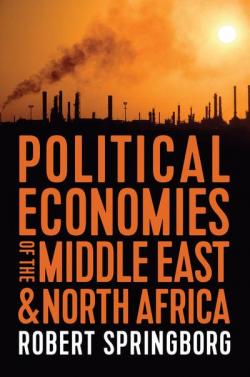Political Economies of the Middle East and North Africa

Despite its oil wealth, the Middle East and North Africa is economically stagnating. Growth rates are comparatively unfavorable and insufficient to substantially improve citizens’ lives. Whether this economic inertia can be overcome or will continue into the indefinite future is a vital question that confronts both the region and the world.
In this book leading Middle East scholar Robert Springborg discusses the economic future of this region by examining the national and regional political causes of its contemporary underperformance. Overgrown, weak MENA states, he explains, have been unable to escape their unfavorable historical legacies. “Limited access orders” and the deep states based in the means of coercion that underpin them undermine state capacities and constrain beneficial, autonomous political and economic activity. Increasingly challenged by their populations, MENA states face the daunting and so far unmet challenge of diversifying non-sustainable, rentier political economies away from direct or indirect dependence on oil and gas revenues. Stagnation of those revenues and failure to generate alternative income sources, combined with rapid population growth, presents the region with an economic challenge that can only be overcome by profound political change.
Preface and Acknowledgements
Map: Middle East and North Africa
Introduction
1. Accounting for Development in the MENA
2. The Origins of State Effectiveness
3. Colonialism, Post-Colonialism, Globalization and the State
4. Limited Access Orders and the Rise of Deep States
5. Deep States: Types, Resources and Impacts
6. Inclusion, Human Resources and State Power
7. State Capacities for Economic Management
8. The MENA: Regionalized but not Integrated
9. Survival Strategies in Weaker MENA States
10. Survival Strategies in Stronger MENA States
Conclusion
Selected Readings
Notes
Index



